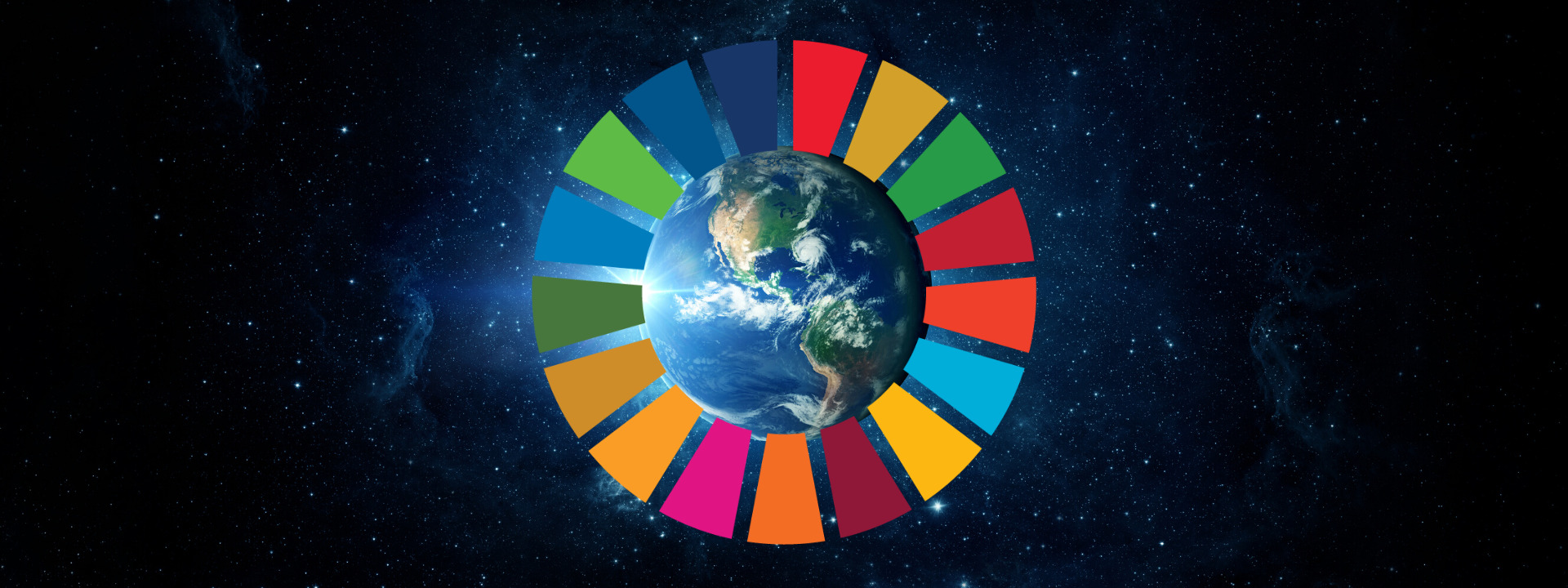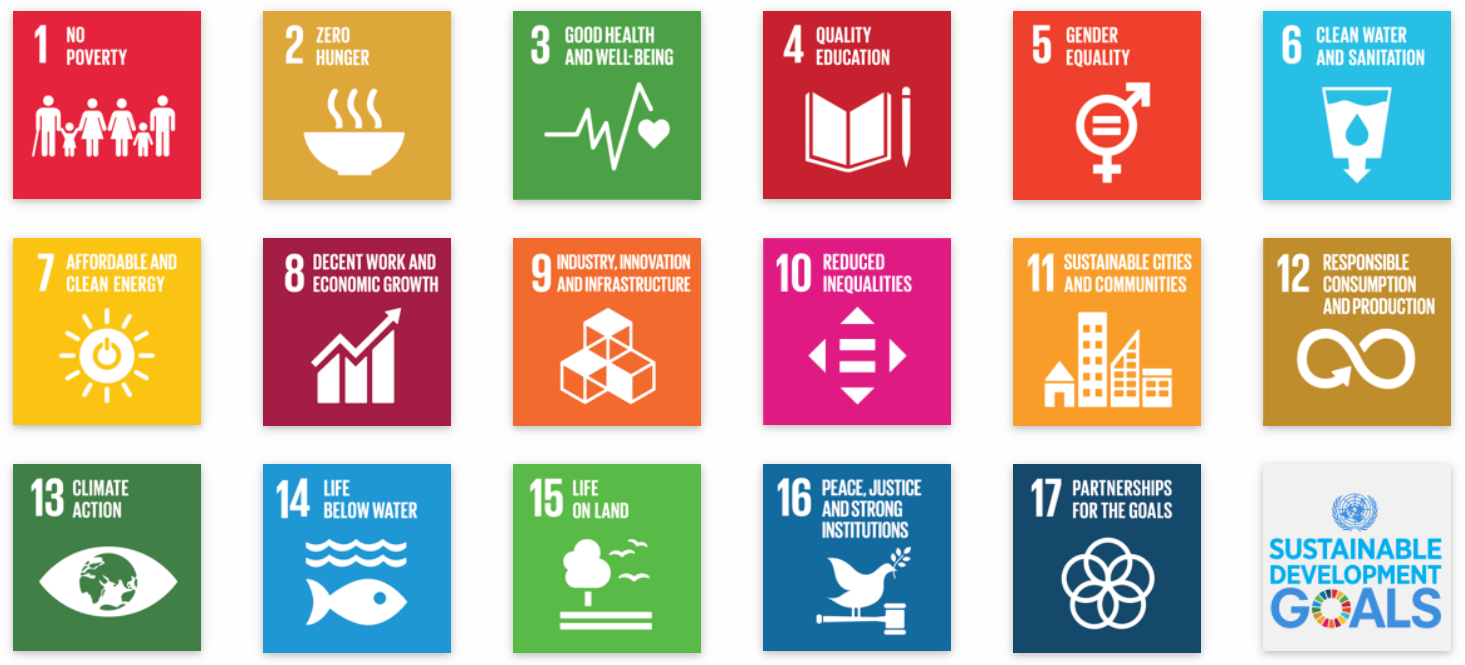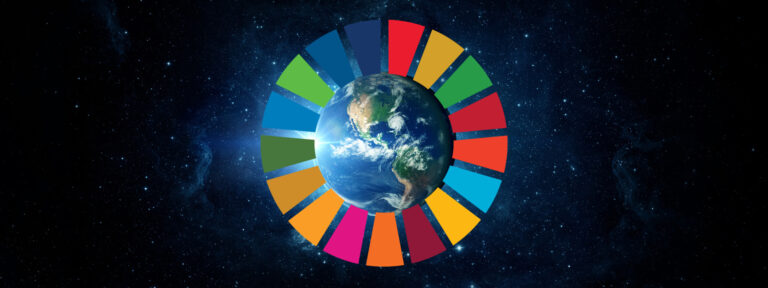
As progress continues to falter, how do the SDGs get back on track?
The UN’s Sustainable Development Report – updated annually and now in its 7th iteration – details the progress made against the UN’s Sustainable Development Goals which aim to achieve decent lives for all on a healthy planet by the year 2030. Digital & Communications Manager, Ben Stallworthy, takes a look at some of the key takeaways from this year’s report.
The UN’s Sustainable Development Report assesses progress in meeting the 17 Sustainable Development Goals (SDGs) that aim to achieve peace and prosperity for people and the planet. First outlined in 2015 and adopted by 193 countries, they are integrated areas of focus ranging from education and health to climate action and biodiversity. Within each of the 17 Goals are a set of specific targets which governments commit to achieving.

There is one key oversight in the setting of these goals, in that they don’t explicitly recognise the relevance of population growth, which can be clearly related to each of the 17. The relationship between the SDGs and population is examined in-depth in our Sustainable Development Goals campaign, here.
Sign up for our mailing list to receive monthly updates all about population and consumption.
WHAT’S NEW IN 2022?
The headlines this year are not good. For the second consecutive year, progress has slipped back further, as “multiple and overlapping health and security crises have led to a reversal in SDG progress”. While progress was slow pre-pandemic – too slow to reach the desired goals by 2030 – it was at least moving forward. The ongoing health situation and military conflicts have all exacerbated poverty, food shortages and access to affordable energy.
Despite these rocky times, the clear statement is that adherence and buy-in to the SDGs are of paramount importance as they “remain the roadmap for achieving sustainable development by 2030 and beyond.”
A DEEPER DIVE
In High-income Countries (HIC), progress has stagnated and “major challenges” remain to reach the SDG achievement when it comes to climate and biodiversity (Goals 13-15), although the outlook is more positive in relation to poverty (Goal 1), education (Goal 4) and industry (Goal 9). “These countries perform better on goals related to socio-economic outcomes and basic access to infrastructure and services”, but “historically these countries are also responsible for the bulk of greenhouse gas emissions and climate change”. Not only is this the case, but richer countries also have an adverse impact on the ability of others to reach their SDGs due to what the report calls international “spillover”.
Population and the Sustainable Development Goals
International spillovers, both positive and negative, occur when “one country’s actions generate benefits or impose costs on another country that are not reflected in market prices and therefore are not ‘internalized’ by the actions of consumers and producers”. Spillover contributes toward the overall SDG index score, but the negative effects tend to come from richer countries, which serves to undermine the efforts of others to achieve success against the 17 goals.
“Approximately 40 percent of the European Union’s carbon footprint relating to its consumption of good and services takes place in other countries.”
“Significant challenges” also remain on responsible consumption and production in HICs (Goal 12), a key area driving spillover, and indicative of a lack of commitment to significant change where it needs to be shown. It also appears any temporary environmental gains made during restrictions imposed due to the pandemic were quickly reversed once those restrictions were lifted.
If we drill down a little further, Finland comes out on top of the SDG index, meaning it is making the most progress, closely followed by three other Nordic countries – Denmark, Sweden and Norway. Perhaps unsurprisingly, Nordic countries are also said to be the happiest countries in the world, according to the latest World Happiness Report. Overall, HICs are closer to achieving their targets, but it’s clear that no country is close to meeting all 17 goals.

In low and lower-middle-income countries, the chart shows real positives in relation to responsible consumption/production (Goal 12) and climate action (Goal 13). However, “major challenges” and stagnation are indicated in goals relating to zero hunger (Goal 2), health & well-being (Goal 3), sustainable cities & communities (Goal 11) and peace, justice & strong institutions (Goal 16).
Across every region and income group, progress is not even approaching what is needed in relation to biodiversity (Goals 14-15) and gender equality (Goal 5).
“Restoring and accelerating SDG progress in all countries, including the poorest and most vulnerable, should be a major priority of recovery plans and reforms to the international development finance system.”
SHOW ME THE MONEY
The report also points to a need for a global plan to finance the SDGs if they are to be successful. The six areas they suggest focusing spending on are education, health systems, zero-carbon energy, sustainable food, sustainable infrastructure and universal digital services.
It is also suggested that while governments have been happy to pay lip service to the SDGs, few have actually committed sufficiently from a policy and budgetary perspective. Only a third of the 61 surveyed governments mention the SGDs in their latest official budget document and only half of those included them in a dedicated section or budget line.
Policy buy-in has varied, but among the G20 member states, the United States, Brazil, and the Russian Federation are showing the least support for the SDGs. Conversely, the Nordic countries, Argentina, Germany, Japan and Mexico are all showing high levels of support.
Heads of state will convene in New York in September 2023 to discuss the SGDs as we arrive at the halfway point between their 2015 creation and the stated 2030 goal. It’s a meeting that only takes place every 4 years, and in advance of that meeting the report highlights the importance of:
“restoring and accelerating SDG progress in all countries, including the poorest and most vulnerable, should be a major priority of recovery plans and reforms to the international development finance system.”
TAKING POSITIVE ACTION
Serious commitment and investment in poverty alleviation (Goal 1), family planning (under Goal 3, health), education (Goal 4) and gender equality (Goal 5) will help reduce population growth, which will in turn help to achieve the rest of the goals. More effort, investment and leadership on environmental targets and sustainable consumption and production is required from HICs in order to enable the other countries to achieve their SDGs.


